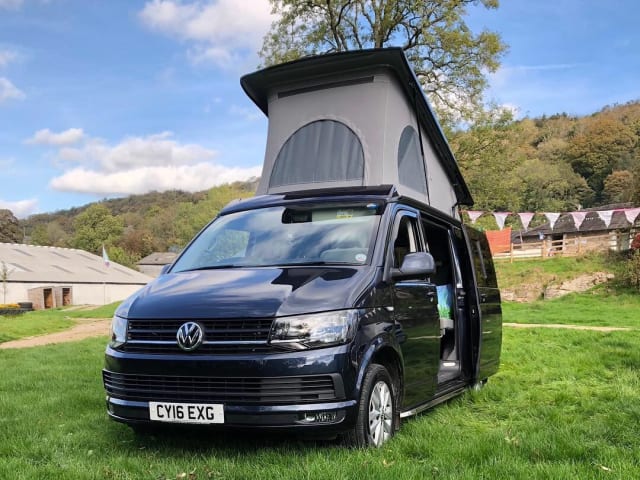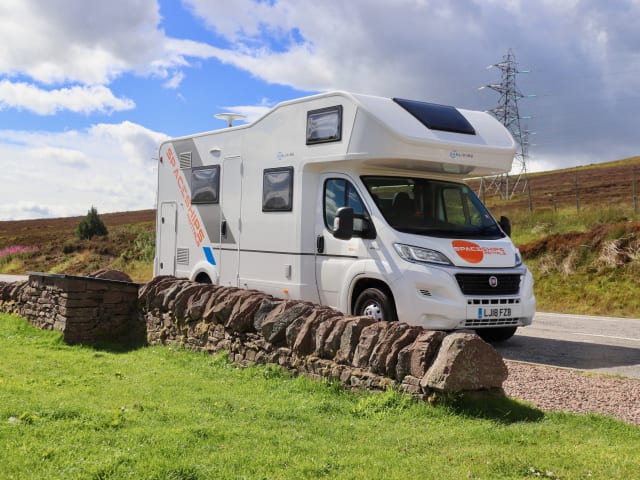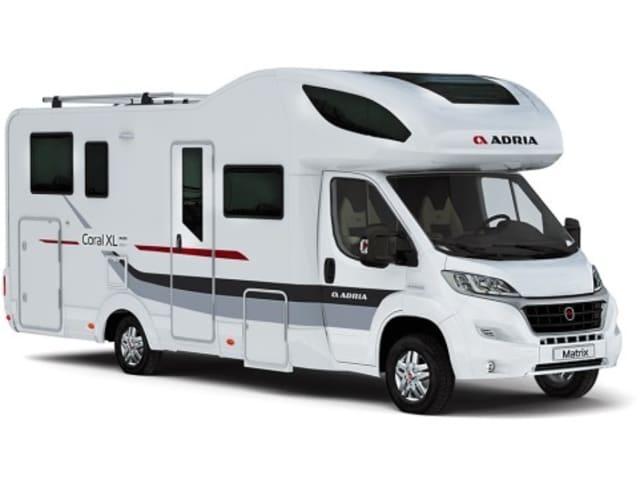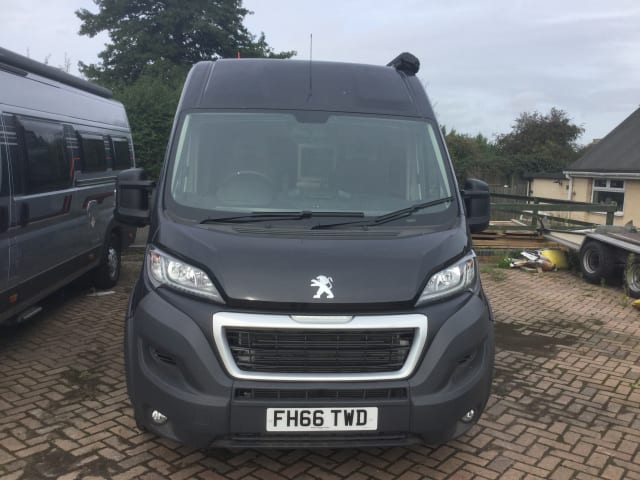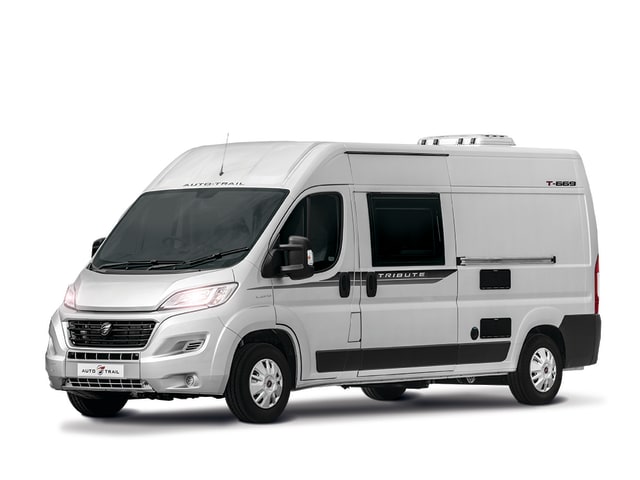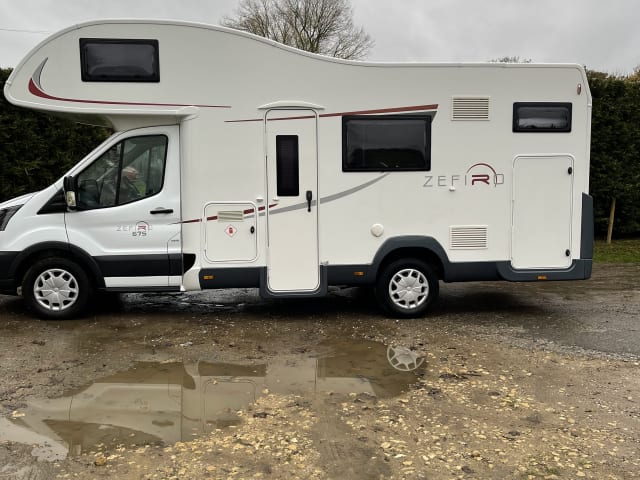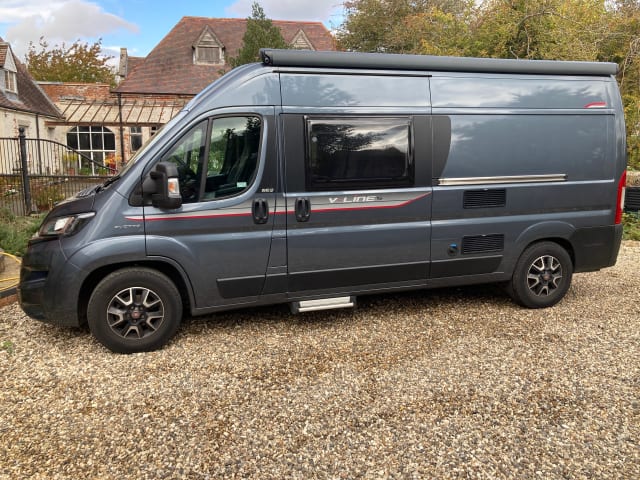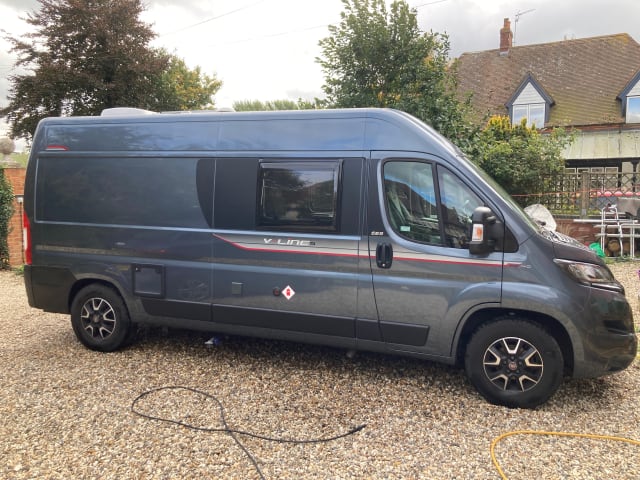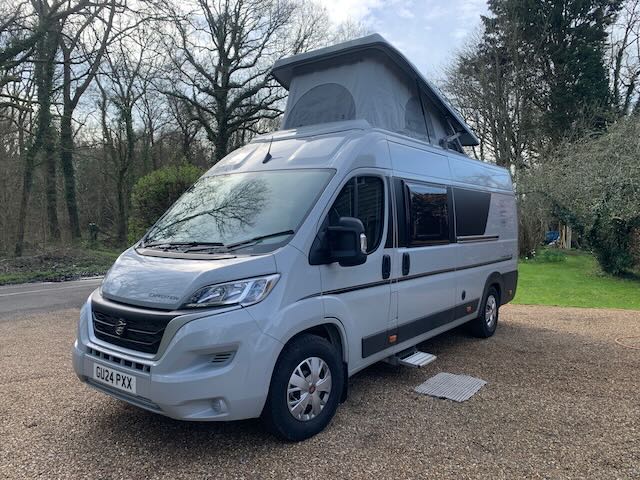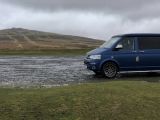For many motorhome owners, having a camping coffee maker is a non-negotiable part of the vanlife bargain. Not only will you save money, but you’ll save time being able to brew it yourself. Whether you’re the type of person to sit and soak in the fresh smells and sounds of the morning with your hands wrapped around your favourite mug, or fill up a thermos and get straight up that mountain when the light breaks, coffee just makes everything better.
Talk to a connoisseur, and they’ll tell you to decide on your coffee maker based on taste; as each method of brewing coffee offers different flavours. It’s true, you’ll probably be able to discern the difference between a strong, robust cold brew or creamy cup of French press. But, when deciding on a camping coffee maker, factors like price, power source, size and convenience for motorhome use are important, too.
Ahead of world coffee day, we’ve done lots of research on the best types of camping coffee makers and listed their pros and cons, alongside the best picks for each. We’ve also thrown in plenty of tips and things to consider when making the decision about how to get your motorhome morning caffeine fix.

Types of coffee makers
-
Electric Coffee Makers
Single Serve
Single serve coffee makers are the fastest way to get your morning cuppa. They’re also the easiest and least fussy option,
They have been notoriously wasteful and pricey for those store-bought coffee pods you pop in, containing pre-portioned ground coffee and built-in filters. But, these are swiftly being replaced by recyclable, reusable filters (which you can fill yourself, with grounds of your favourite bean) or soft pods in a round paper filter, which are much better for the environment.
They take up the most space and use the most electricity; the powerful heating mechanism that boils water and brews your coffee in about a minute also requires electricity, about 900 to 1500 watts for Keurig and Nespresso machines. They tend to be the priciest. However, if you’re a coffee fiend who needs a quick fix, yet has a refined taste, there are compact and high quality options which make fantastic campervan coffee.
We think the best single-serve camping coffee maker is Nespresso’s most compact model, the Essenza Mini. It has a high-pressure pump and fast heating system, so it’s ready to use in under 30 seconds and takes about a minute to pour your drink. There are two cup sizes, it’s intuitive and simple to use, and there are plenty of recyclable and compostable coffee pods out there which are compatible with Nespresso machines. In fact, Nespresso recycle pods if you send them back to the company!
Drip
Drip coffee makers are iconic and a great multi-serve option. However, they do make slightly weaker coffee than espresso makers like single serves and percolators, because of the higher water input. Nonetheless, brands like Dometic make appliances especially designed for motorhome use, so their five-cup drip coffee maker makes a perfect addition to your campervan counter top, especially if you want to make a few cups at a time. The warming plate stays hot with its built-in thermostat, and the glass jug is held in place by an integrated transporting device (because it is designed for mobile use). The machine itself can be fitted to a worktop and comes with a fixing kit to do so. There’s an auto shut-off mechanism so it won’t overheat, and it can come in 12V or 24V options.
Thermal coffee makers
These work like drip coffee makers except they brew your coffee into an insulated thermal carafe. This keeps your coffee hot for hours without continuing to “cook” your coffee on the hotplate, which might lead to a thick, bitter brew if you forget about it for too long.
Whilst there are multi-serve thermal options on the market, this one from Morphy Richards is the perfect camping coffee maker for early birds who need to get out into their surroundings and enjoy their adventure with a brew. It brews from fresh grounds or soft filter coffee pods, into a stainless steel travel mug with 400mL capacity, so you can lace up your boots whilst it pours, swipe it off the side and go. It’s also got a 24hour programmable timer so the coffee is ready when you want it! You don’t need to worry about buying extra paper filters either, there’s a permanent filter fitted in it.

Some drip coffee makers brew your coffee into an insulated thermal carafe
Electric Percolators
Coffee culture has demanded the evolution of various sexy appliances which you could use to make campervan coffee. However, one of the oldest mechanisms is the humble percolator. The soothing, wholesome burbling it makes as steam forces water through coffee grounds is as characteristic as the strong coffee it produces. You can get electric percolators which remove the need for stove-top boiling and make life a whole lot easier.
For example, the Maxi-Matic Elite Platinum EC-120 12 Cup (yes, 12!) percolator has a transparent top knob so you can see when the coffee is circling, it’s made of stainless steel which helps maintain the balance and flavour of the coffee (as plastic elements can transmit chemicals and lead to off-tastes). It has separate power and ready-to-drink lights, a heat-resistant handle, and can be lifted off the heating element for cordless serving. When returned to the base, it will be kept warm automatically but there’s a boil-dry safety feature, so that even when plugged in, the pot won’t keep heating when there’s no liquid inside.
The only downside is that there are multiple parts to take out and clean. Other than that, this is a classic and impeccable way to get strong coffee to plenty of mouths without compromising on space or effort.
-
Stove-Top Coffee Makers
Cafetiere/Percolator
Also known as the Italian Moka pot, the traditional version of the electric percolator above, but in such a romantic and characteristic fashion, it’s hard to leave behind the lovely ritual of filling these with water, popping them on the stove and waiting for their little song. Many people opt for these in their homes. Plus, if you have gas rings rather than a reliable electric supply, this is a foolproof and reliable way to get your early espressos, which will probably last you for years and years to come.
Bialetti are one of the biggest names in the game and make long-lasting, reliably high-quality pots, like this 9 cup model, which we think are the best features of a camping coffee percolator.
Just a heads up, if you’re a fan of making camping coffee using a percolator or smaller coffee maker, and have a gas stovetop in your van, you might want to invest a small extra cost in a ring reducer to avoid the annoyance of the pot tipping over.
-
Just Add Hot Water
If you’re into coffee, you’ll know that water impacts taste quite a lot. The temperature of the water you brew your coffee with, and where the water has been stored (and for how long) make a huge difference. If flavour is important to you, you can get your water just right by buying special pour-over kettles like this one from BEEM, which have a fitted thermometer and goose-neck spout for ‘evenly dosed water infusion’ (we trust the experts on this one). Also, try to use the freshest water possible for your brews.
French Press
A French Press, or ‘plunger pot’ is easy to use, cheap, and super mobile so long as you can heat up water on the road. The press uses a metal mesh filter to force all the coffee’s flavourful oils into your cup. We’d recommend getting a stainless steel French Press for your van, as they’re more robust and last longer than glass ones.
Pour-Over
Despite their simplicity, pour-over coffee makers have a reputation for producing great coffee due to the slow even method of coffee extraction for medium to fine grounds. For the optimal pour-over brew, add these grounds yourself to a filter that fits into the funnel element, and pour over water that has been warmed to about 90C. Pour over ⅓ of all the water you’ll need first, and wait 30 seconds to saturate the grounds and get them ready to brew (‘blooming’ them). Then, pour in the rest of the water in the opposite direction. Once brewed, simply remove the filter with the grounds, pour the coffee into your favourite cup and enjoy.
For the best pour-over camping coffee pot, go for something with a flat-bottom and, again, we’d recommend swapping the usual glass versions found in the home for robust stainless steel. Asobu’s Pour Over Coffee Maker comes in four different steel colourways and pours into a thermal flask.

Pour-over coffee flask
Steeped Coffee
This is a controversial option - steeping your coffee like you do tea. It’s great if you’ve just got kettle or heat water on your stove, or one of you travelling in the van is a tea drinker and you don’t want to invest in a camping coffee maker. It’s an easy, handy and much less wasteful option than brewing an entire carafe for one, and most coffee bags are compostable. From experience, steeping coffee works best if you stir it fast in a circular motion, as this helps cycle water through the grounds inside the bag.
The best brands on the market, as voted by the Independent, are from Paddy and Scott’s coffee shop, Lyon’s Go-Joe, and Taylor’s of Harrogate Italian coffee bags.
Aeropress
The Aeropress is a relatively new (invented in 2005), yet world-renowned and extremely popular coffee machine from the Canadian firm, Aerobie. It has been on the market since 2005 and uses a new extraction method of its own, which has nothing to do with any of the well-known ones above. If you’re unfamiliar with the remarkable science of the Aeropress, check out this video for an idea of how it works. After one or two goes, you’ll be making excellent coffee like a pro.
As far as a camping coffee maker goes, this device is absolutely ideal. It comes in a package complete with dispenser, instruction booklet, set of 350 disposable filters (which can be used several times each, unlike with pour-over and other coffee filters), and even a nylon bag to store or transport the Aeropress. It’s neat little size, simplicity of use and the fact that it doesn’t need electricity make it the perfect addition for your motorhome adventures. We recommend this one as it is an especially designed, sturdy model for mobile use. The only downside is that you’ll only get between 1 and 3 cups per brew.
4. Just Add Cold Water
Cold Brew
If you’re travelling in warmer climes and your little metal home on wheels tends to heat up in the morning, or you just prefer to have a cold, robust cup of the good stuff, getting a cold brew camping coffee pot might be the route for you.
Cold brew coffee also happens to be the choice of true coffee aficionados. It’s 65% less acidic and way less bitter; if made right, it’s excellent-tasting. But, it’s hard to get as good as at the coffee shop, at home. Nonetheless, with the right maker, you can still get a tasty cold brew with ease. The Primula Burke has been voted the best overall maker on Wired, America’s monthly science and technology magazine. And we trust the experts.
It’s got a durable build and makes 32Oz of coffee at a time. Put coarse grounds into the mesh basket, snap it into place, slowly add water and come back for your cup in 24 hours. The filter is fine, so your smooth, flavourful brew won’t get ruined by grittiness and a bitter aftertaste. Cleaning the Burke is easier because the bottom of the filter screws off, so grounds can be ejected easily. It doesn’t come with a coffee scoop like some other makers do, but these are easy enough to pick up.
Unfortunately, it’s made of glass, but it does have a durable protective holder and non-slip base. Just be careful to store it safely when you’re on the move! Just check that it will fit in your fridge, as this is the best place to leave the Burke brewing.
Things to consider
When you’re deciding on your camping coffee pot, bear a few things in mind:
-
Space
Space can be very limited inside a motorhome, so a coffee maker’s size is probably the biggest consideration. Most machines can be stored out of the way, but still take up valuable space either on the counter or inside a cabinet. Consider how many people need coffee, and whether you want a machine with extra parts for storing water (like a single-serve machine).
-
Power source
There are plenty of coffee makers that don’t require electricity, but those that do can have a significant power draw against your battery. If you’re living off-grid, find one that doesn’t require a large amount of energy to operate.
If power is a major concern, or you use gas to power a stove-top, you might be better off purchasing a percolator or any other maker that just requires hot (or cold) water.
-
Cleaning
The more you use your coffee machine, the more often you’ll have to clean it. An easy-to-clean coffee machine may be ideal if you’re brewing coffee every day while you’re on the road. Some machines can be simply wiped with soap and hot water, while others need to be cleaned with a solution of water and vinegar. Some makers, like drip coffee pots and percolators, have to be washed after each use, so bear that in mind.
-
Ease of use
Having a coffee maker that requires a hands-on approach can be a cathartic little ritual to integrate into your slow-paced life in a campervan. However, you may prefer something quicker and easier to use. Factor a consideration of how you want to spend your time into the decision.
-
Quality & Budget
After a pricey motorhome purchase or conversion, you’ll probably want to be careful about letting extra costs for appliances and accessories add up. However, the quality of your coffee maker makes a huge difference to your brew. Why invest in a good roast if the machine just doesn’t produce a great cup of coffee? So, although higher-quality products are more expensive, they are usually more efficient, easier to use, last longer than cheaper models, and therefore save you money in the long run.
Prices of coffee makers range widely depending on the style, model, and brand. Those that don’t require electricity tend to be cheaper than a lot of other high-tech models. You can easily find a durable non-electric multi-cup coffee maker for £15 to £40.
Mid-range electric drip coffee makers can cost anywhere from £40 to £70, with high-end models hovering around £90 a machine. Single-serve coffee makers can be the most expensive type of coffee maker and can cost upwards of £130 for these types of machines.

Campervans and Coffee
For many of us, it’s hard to imagine starting the day without a coffee. This becomes even more true if your day begins with a surf or a hike! Or you might need to wrap your hands around a warm cuppa when you come into your cosy van after a day out. Being on the road doesn’t mean you should forgo any of these simple pleasures, or have to spend time and fuel travelling to the nearest cafe. Whether you prefer smooth and creamy coffee from a French Press, or a punchy, robust cold brew, it’s possible to bring these flavours with you, and make them in a way that suits you, too.


